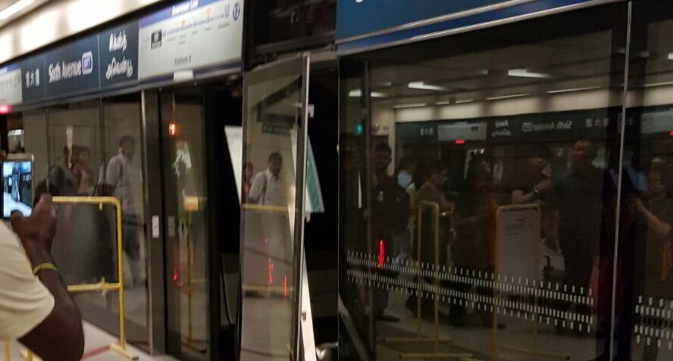The Land Transport Authority (LTA) has announced the completed detailed investigations into the cause of the 15 November 2017 train collision at Joo Koon MRT station.
It was reported that 36 passengers were injured due to the accident among a total of 517 passengers who were on the second train which was travelling at 16km/hour.
LTA stated that its findings from its detailed investigations are consistent with its initial findings presented at the media briefing on 21 November 2017, stressing that the investigations confirm that the root cause of the collision was a software logic issue with the Communications-Based Train Control (CBTC) system which was not configured to cater for the failure conditions that occurred on 15 November 2017.
The authority said that it has corroborated its findings with the final investigation report submitted by signalling system supplier Thales.
It said that further extensive tests and analysis by LTA, SMRT and Thales, including on-site re-enactments, have confirmed that a confluence of the following failure conditions contributed to the incident:
a. The train develops an abnormal condition with its train-borne CBTC equipment which prevents it from communicating with the trackside CBTC signalling equipment. When this occurs, the CBTC system will, by design, apply a Non-Communicating Obstruction (NCO) protective “bubble” around the affected train to ensure its safety. This was the requisite start state for the incident; and
b. The train crosses the only track point that has not yet been fully modified for compatibility with the CBTC system; and
c. The NCO protective “bubble” is unexpectedly disabled by the CBTC system, as the software logic cannot correctly process a track point that has yet to be fully modified for compatibility with the CBTC system when running in passive mode. This is not an issue when the CBTC is running in active mode on the North-South Line and the Tuas West Extension (TWE) as they are fully on the CBTC system.
“The failure conditions occurred as a result of complications from operating two signalling systems concurrently on a single line. As a precautionary measure, operations on the TWE (from Joo Koon to Tuas Link MRT stations) have been separated from the rest of the East-West Line (EWL, which operates on the legacy signalling system) since 20 November 2017,” LTA said.
In addition, LTA said that Thales has also completed circuit modification works for the previously incompatible track point, and is modifying the software logic of the CBTC system to prevent future inadvertent disabling of the NCO protective “bubble”.
“The safety of our MRT system is of paramount importance to LTA and our rail operators. LTA and SMRT have worked closely with Thales to ensure the safe operation and testing of the new CBTC signalling system,” the authority said.
“Thales has given its full assurance that the CBTC signalling system used on the NSL and TWE are safe and robust, and that CBTC works will not impact the continued operation of the legacy signalling system,” it added.
LTA said that to strengthen testing processes for the new signalling system on the NSL and EWL, Thales will set up a CBTC simulation facility in Singapore to augment existing overseas facilities.
According to LTA, this new facility will allow us to perform additional simulation tests which are tailored to the environmental and infrastructural conditions of the rail network in Singapore and will also enhance our ability to test solutions for CBTC issues in a controlled setting without affecting train services.
LTA said that the simulation facility will be established in two phases. The first phase will be completed by the first half of 2018 to enable off-site testing of the EWL’s CBTC signalling system before it is fully introduced for passenger services. When completed, this facility will be the first of its kind outside Paris/Toronto where Thales is based. While, the second phase will be established by end-2018 to further augment the facility’s CBTC system software testing capabilities.






